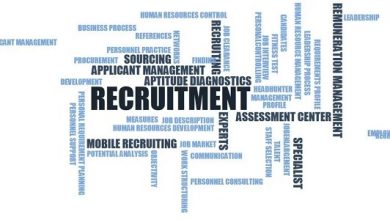Types of organizational chart importance and benefits and role of HR
Business organization chart
In this article we will provide you the information about Types of organizational chart importance and benefits and role of HR.
Despite what many people think, the organization chart is not that new. In fact, it has been used since the 19th century and, today, it can be found in the most diverse companies, regardless of its niche or size.
Basically, a business organization chart is a chart used to make hierarchical representations of an organization . It is a method that is often used in structuring teams.
With the tool, it is possible to organize the spaces occupied by each professional, defining with which levels they need to communicate and render accounts.
Thus, management is more efficient , as we clearly know which functions, groups and projects are in place. In addition, organizing the way the work works, consequently, brings better results, since each one is trained and dedicated to performing their tasks with mastery.
Also, as it is extremely important for the success of a company and highlights the responsibility relationships, the business organization chart must be present from the strategic planning.
In this sense, the preparation of the organizational chart is simple: there are “boxes” for each existing position, from the intern to the CEO. The quadrilaterals are connected by lines to direct the hierarchy between each position. With this, we can break up the work and better share everyone’s responsibilities.
Therefore, the use of the organization chart will enable a more comprehensive view of the entire organization , being useful both for managers and human resources professionals and for employees in general .
What is the importance and benefits of an Organization Chart?
It is not uncommon to find companies with serious problems in their processes, often resulting from the lack of alignment between employees, who cannot identify the leaders.
When something happens, the professional doesn’t know who to turn to, since he doesn’t have a pre-defined superior. This directly impacts internal communication and can be easily resolved by applying the organization chart.
At this time, it is the organizational chart that helps to clarify which roles will be performed by professionals, so that the organizational structure is more understandable for the entire team . Let’s get to know 5 of its benefits?
1. Greater productivity
The number of companies that have to deal with low productivity and results below expectations is not small. Many professionals even assume that they do not feel productive in their work.
In this sense, there are several reasons that can cause this and one of them is the absence of an organizational chart. When you have a clear business structure, you can increase productivity because everyone knows what they need to do.
2. Improves internal communication
Once the employee knows who to talk to to resolve issues, the expectation is that there will be more communication between team members, which facilitates problem solving.
Therefore, it is necessary for the leader to know how to listen to the person being led and vice versa, which makes both of them need to understand the organizational chart.
3. Help in the integration of new employees
When we hire a professional, we must pay extra attention to their integration into the company, as they need to feel welcomed and respected in their new position. Thus, the organizational chart is useful to clarify how the company works, what the employee will do and who he should contact in urgent situations.
Also, if the company is small, it may be easier to do this verbally and introduce leaders face-to-face, but a larger organization will likely have to make some material available.
4. Improves understanding of levels
Understanding what levels exist in the company, identifying who is at the top and at the bottom, is important for any organization. Even a flexible business relies on these definitions, as they help to control tasks and improve communication between employees.
There are three basic levels: strategic, managerial and technical. With an organizational chart, it is easier to understand them, even if the hierarchy is not very strong in the institution. Most of the time, employees feel greater tranquility and credibility when they know who the managers are .
5. More transparency and organization
For the company to be successful, it is essential to have a strong organizational culture. In general, employees prefer institutions that show concern for factors such as transparency and organization.
This is because professionals value working in organized places, where they have access to information. In this way, the organization chart allows everyone to understand the structure of the work.
What are the types of business organization chart?
There are several types of business organization chart that can be applied by small, medium and large businesses. Hence, you need to choose the one that will best suit your organizational needs .
Vertical
The classic or vertical organizational chart is the most used in traditional companies. In this format, the boxes are arranged vertically, indicating that whoever is at the top occupies the position with the highest hierarchy.
Horizontal
The horizontal organizational chart, on the other hand, is adopted by those organizations that do not prioritize hierarchies and subordination between positions. In this case, employees have greater autonomy, being able to make decisions and even act in other functions. Precisely for this reason, the work environment tends to be more informal.
Circular
The circular or radial organization chart does not highlight hierarchies either. Here, the position with the most decision-making power, usually the leader of the company, is placed in the center and, on the sides, the rest are included. Finally, its main focus is to promote collaborative work and reduce differences between positions.
Functional
The functional organization chart has the same structure as the vertical organization chart. The difference between the two is that, in this model, the focus is not on hierarchy, but on functions related to positions. Thus, as activities are highlighted, functional relationships and internal communication are facilitated.
matrix
The matrix organization chart also has a structure similar to the classic one, however it is used when the organization does not have specific defined functions, that is, flexibility is greater.
Linear
The linear organization chart or linear responsibility organization chart gives greater priority to the tasks, activities and functions performed than to the existing hierarchy between the positions, making clear the role of each one.
in bars
The bar organization chart focuses on the hierarchization of positions, but its representation is made through vertical bars with a size corresponding to the level of authority. Thus, the biggest bar represents the highest office.
What is the role of HR?
In an organization, HR plays a strategic role in managing people, that is, the company’s human resources, to maintain competitiveness in the market and stand out among competitors .
The role of Human Resources is extremely important during the development of the company’s organizational chart. That’s because, this area has enormous knowledge about each employee and the work they perform.
Knowing this, managers must rely on the help of HR at this time, otherwise, they may face difficulties in identifying the main responsibilities of the team.
In this sense, the HR professional will ensure that everything is in accordance with the organization’s strategic planning, always aiming to achieve the best results and increase performance.
How to create an organization chart?
The first step in creating a schedule is to decide which type will best match your company’s goals. Some models will be better suited to traditional organizations, while others will be preferred by more innovative ones.
In this sense, managers, together with the human resources sector, must analyze the entire institution, mapping the hierarchy, existing positions and their main functions.
In a classic organization chart, we put the chair at the top, followed by branches that connect the other areas. But it is not necessary to enter the name of each person, but the position they occupy.
With the popularization of digital technologies, there are already systems that can help structure the organization chart . Not everyone knows it, but you can do it with Excel, for example, although there are tools for this purpose.
Also, keep in mind that new employees come to the company frequently, so you’ll have to update the organizational chart fairly regularly to prevent it from becoming outdated.




